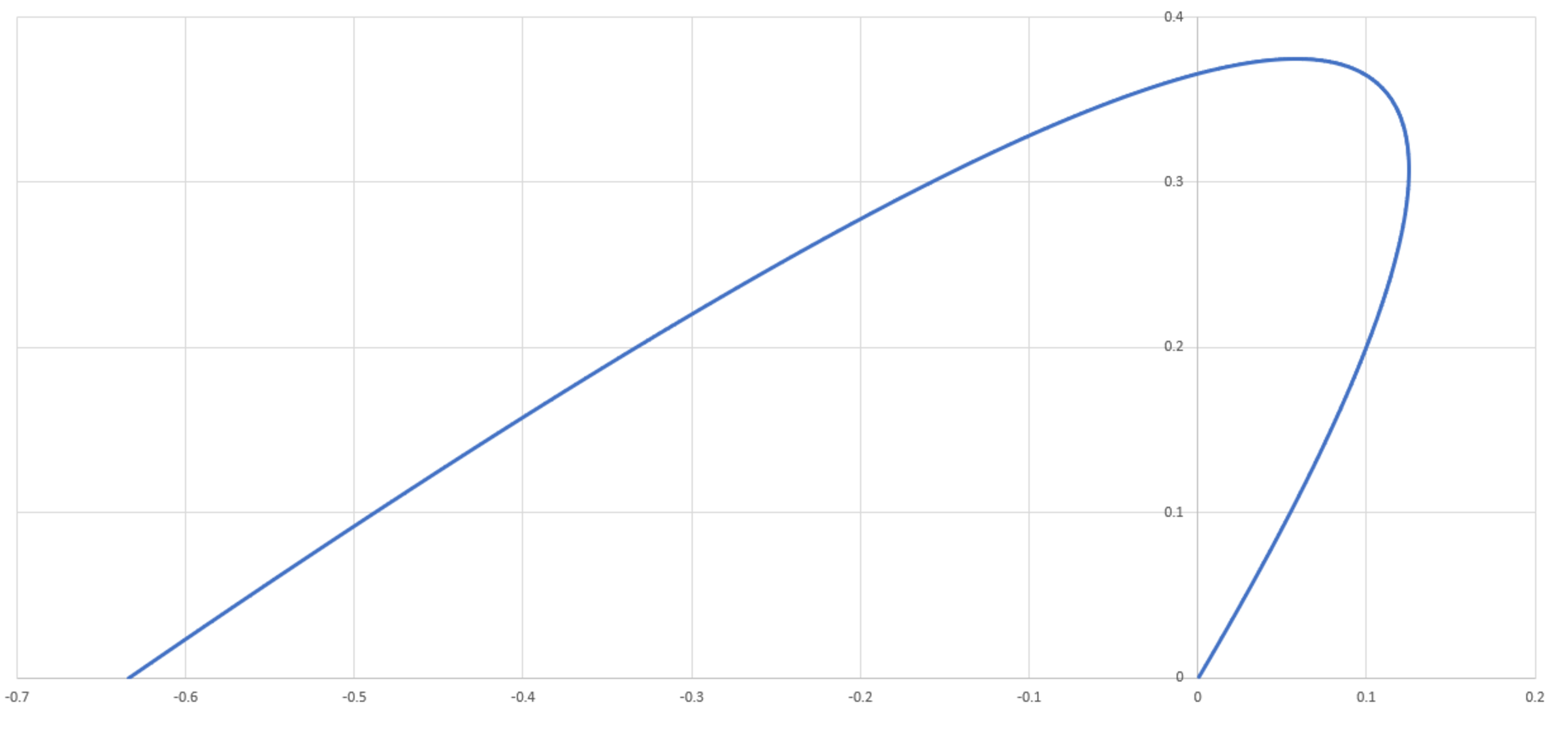Action 9-8-2020
A particle of mass m = 1 undergoes motion according to the following Lagrangian:
L = 2 1 m ( x ˙ 2 + y ˙ 2 ) − x − y
At time t = 0 , the particle's position and velocity are ( x , y ) = ( 0 , 0 ) and ( x ˙ , y ˙ ) = ( cos ( π / 3 ) , sin ( π / 3 ) ) . The particle moves until it once again reaches y = 0 at time t f > 0 .
The action for this path is (the parentheses indicate that the Lagrangian varies over time):
S = ∫ 0 t f L ( t ) d t
If the coordinates for this path are ( x ( t ) , y ( t ) ) , define two altered paths:
( x 1 ( t ) , y 1 ( t ) ) = ( x ( t ) , 0 . 9 y ( t ) ) ( x 2 ( t ) , y 2 ( t ) ) = ( x ( t ) , 1 . 1 y ( t ) )
Note that these altered paths preserve the starting and ending coordinates in space and time. Let S 1 and S 2 be the actions for these paths (calculated over the same time interval as before). Determine the quantity Q :
Q = S S 1 + S S 2 − 2
Bonus: What is the physical significance of the action ratios?

The answer is 0.01866.
This section requires Javascript.
You are seeing this because something didn't load right. We suggest you, (a) try
refreshing the page, (b) enabling javascript if it is disabled on your browser and,
finally, (c)
loading the
non-javascript version of this page
. We're sorry about the hassle.
2 solutions
Lol I used the same method... weird. I got an error someway... well done! I upvoted :)
Code-based solution provided.
I remember seeing your previous problems where you speak of the principle of 'stationary' action and not that of 'least' action. In this case, the solution of stationary action corresponds to that of least action, so each of the action ratios are greater than unity.
1 2 3 4 5 6 7 8 9 10 11 12 13 14 15 16 17 18 19 20 21 22 23 24 25 26 27 28 29 30 31 32 33 34 35 36 37 38 39 40 41 42 43 44 45 46 47 48 49 50 51 52 53 54 |
|
First to solve. I did a code based solution as well; however at first I tried integrating action analytically ; that took me about 20 minutes, then, I did a code based solution, which took me about 20 minutes. So, after 40 minutes of going round a merry-go-round, I finally got the answer. Lmao.
Nice one btw. Thanks for posting the solution :)
Log in to reply
Nice job. Did your analytical approach yield the right answer?
Log in to reply
Nope. I decided to go with a numerical approach instead. My theory was right, with the analytical computations of the integral and the ratios, but yeah. I may have computed something wrong. That's the tricky part with an analytical method.
Solving Lagrange's equations yields x = 2 1 t − 2 m 1 t 2 y = 2 3 t − 2 m 1 t 2 0 < t < t f = m 3 and hence we calculate S S 1 = S 2 = ( 3 − 2 3 ) m 2 = ( 8 0 0 8 0 1 3 − 2 3 ) m 2 so that S S 1 + S S 2 − 2 = 2 0 0 1 ( 2 + 3 ) = 0 . 0 1 8 6 6 0 3 The fact that S 1 , S 2 ≥ S is an example of the Principle of Least Action.